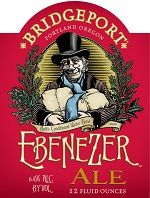Two tidbits from today’s Shanken News Daily:
* Heineken has announced a global marketing partnership with Facebook to create digital campaigns for the company’s brands around the world. The agreement will help Heineken reach over 800 million Facebook users. Heineken says its Facebook fan page is the largest for any beer brand, with over 4.6 million adult users.
* The U.S. beer market continues to struggle, according to the latest numbers from Nielsen. Off-premise volumes declined 1.9% in the most recent 52-week period (ending November 12) to 1.38 billion cases. The outlook appeared brighter on a value basis, as dollar sales inched up 0.6% to $28.6 billion during the same time period. The average price of beer in the off-premise increased 2.4% to $19.82 a case.
Craft and specialty brews continue to be the most vibrant segment in the beer category, surging 16.6% by volume in the 52-week period, with even stronger value growth (+17.8%) on an average price of $31.80 a case. The craft/microbrew segment is priced higher, on average, than imported brands ($27.59), yet imports fell 0.6% by volume during the same time span. Mexico continues to be the largest-selling origin for imported brews off-premise, at 78.7 million cases (+0.4%), but the fastest-growing source was Belgium (+28.9%).
 This is my contribution to The Session #58, hosted by
This is my contribution to The Session #58, hosted by  I’m partial to Alistair Sim from the 1951 film Scrooge (and later in the voice in an animated TV version of A Christmas Carol). Who wouldn’t want to buy a beer for a “sad-faced actor, with the voice of a fastidious ghoul?”
I’m partial to Alistair Sim from the 1951 film Scrooge (and later in the voice in an animated TV version of A Christmas Carol). Who wouldn’t want to buy a beer for a “sad-faced actor, with the voice of a fastidious ghoul?”